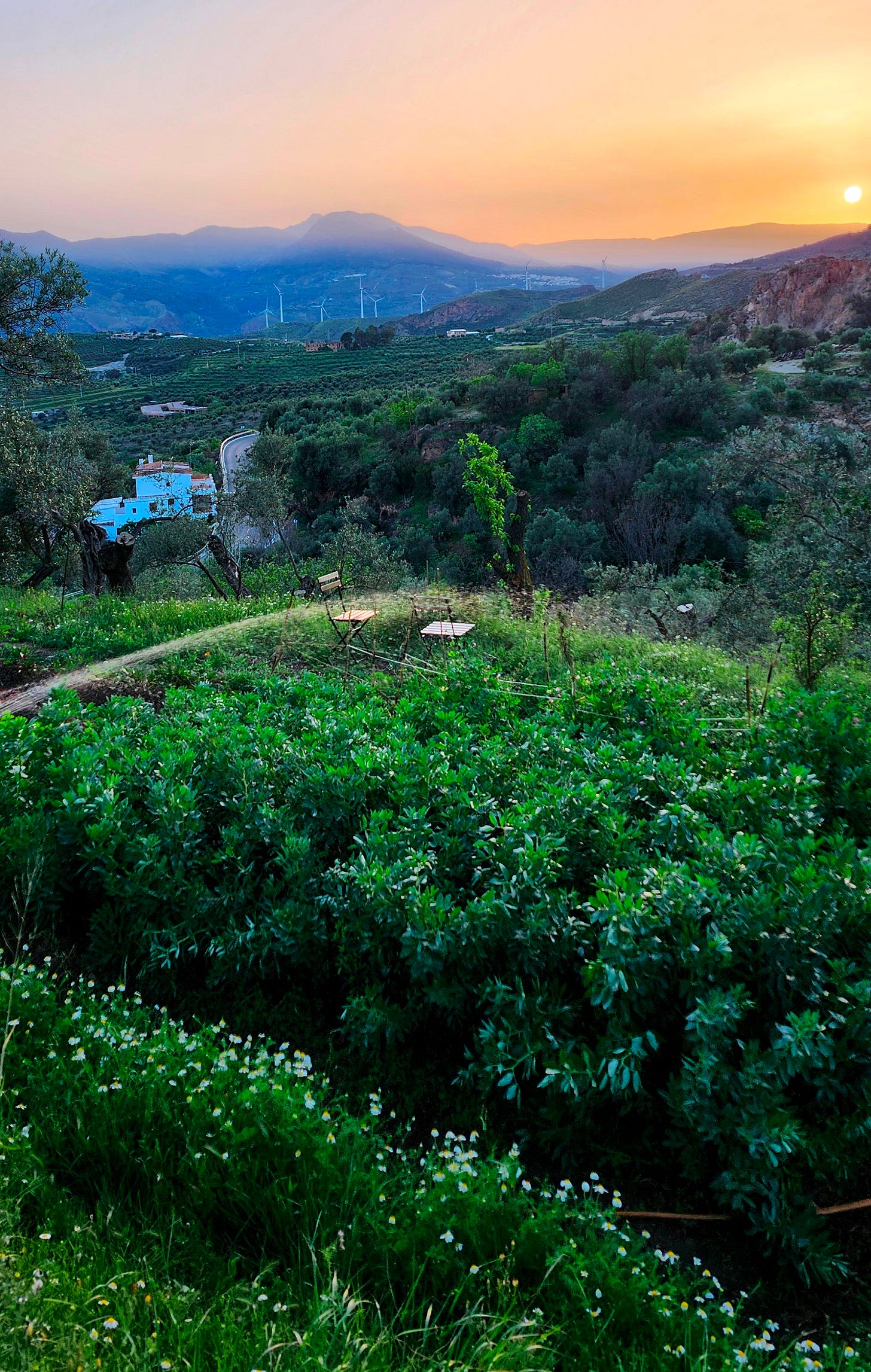Tucked on a cliff in the Alpujarra mountains in the south of Spain is a spiritual sanctuary called Azahara International. The property sits high above a sloping valley, the landscape a kaleidoscope of textures and contrasting shades of green, the hills draped in the shifting light. The land itself consists of dozens of olive and orange groves, pomegranate and fig trees, vegetable gardens bursting with lettuce, kale, and tomatoes, and endless rows of wild lavender and fragrant thyme. It’s a place both remote and isolated, yet deeply and furiously alive.
I didn’t go to Azahara to nurture my writing practice. I went there because frankly, I didn’t know where else to go. When you travel full-time, sometimes the path forward is too wide. Sometimes it’s not a path at all, but an expanse so vast and yawning, it makes you feel lost. Hoping that a brief respite in nature might help me shrug off the cloak of uncertainty and disorientation I’d been wearing lately, I signed up to volunteer.
For 4 hours a day, five days a week, I cared for the land — gardening, shovelling manure, planting and harvesting crops, and general maintenance of the sun-soaked soil. I was taught how to build a trellis from hazel poles, offering more space for tomatoes and climbing beans to grow vertically. I learned how to plant potatoes by digging a trench into the dry earth, and how to use mulch as a blanket to keep the weeds from waking. I discovered the therapeutic power of pulling invasive plants out from the root, digging and pulling until the whole structure released.
I also discovered that gardening had a lot to teach me about being a writer, that both are more about presence than perfection. It’s about showing up, not being afraid to get your hands dirty, and trusting that what you plant might bloom, if you let it.
Lesson 1: The Importance of Daily Tending
Growth requires consistence, a daily routine of nurturing, planting, watering and weeding. These small, steady acts of maintenance create the kind of healthy foundation that both seeds and ideas need to sprout.
Lesson 2: Surrender to the Seasons
Some days the soil is stubborn or dry. Sometimes nothing blooms for weeks. Creativity and progress also happen in phases. They also experience bouts of drought, growth and quiet germination. Recognize that there’s time for action and there’s time for rest, and make peace with that reality.
Lesson 3: Nurture the Roots to Admire the Blossom
Roots grow below the surface so don’t neglect the invisible work. Creativity requires thinking, feeling, listening and seeing. Seeds grow where you water them, so trust the unseen.
Lesson 4: Beauty Requires Chaos and Structure
The best gardens have both order and spontaneity. So do the best stories. Do the work, but don’t fear the wild and unexpected. Sometimes, the most beautiful blooms grow in places you never thought to plant.
I didn’t go to Azahara to find clarity about my writing, but I found it anyway in the quiet rhythm of tending to something outside of myself. I left with no grand epiphany, just a deeper trust in the process. Writing, like gardening, is a slow and sacred labor. And sometimes, simply showing up is enough.





